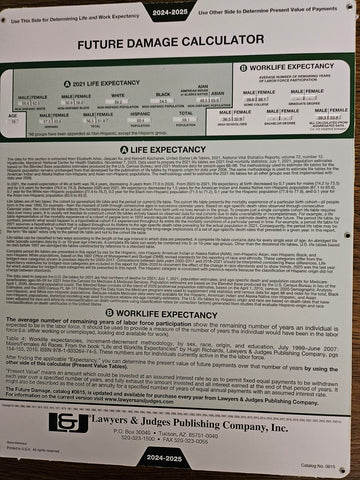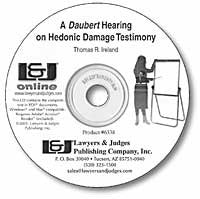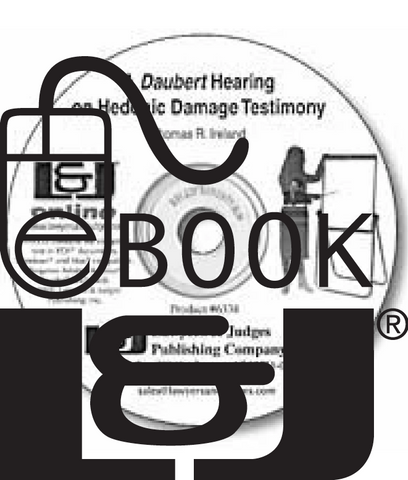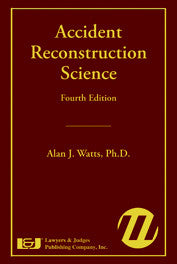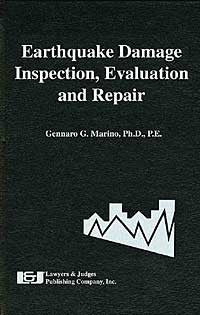
Earthquake Damage: Inspection, Evaluation and Repair
- Author: Gennaro G. Marino
- ISBN 10: 0-913875-42-2
- ISBN 13: 978-0-913875-42-1
- Copyright Date Ed: July 23, 1997
- Pages: 404 pages
- Binding Information: Casebound
- Size: 6 ✕ 9 Inches (US)
This is the first book ever published devoted entirely to identification and reconstruction of earthquake damage.
Building inspectors, engineers, architects, contractors, and insurance adjusters, will benefit from this book. How are building foundations and superstructure elements damaged by the force of an earthquake? How is the ground affected? Will it be safe to rebuild on the same site? Are there any possible hidden dangers a builder needs to know before proceeding? How can you test for them? The destruction, as well as effective repair methods for various typical scenarios are well illustrated and supported with appropriate photographs.
Dr. Marino has investigated and designed repairs for damage to various types of structures from a variety of causes for over 15 years. This experience includes earthquake damage and discerning it from pre-quake damage.
This book is also available as an E-book. Click here to purchase and download:
Chapters include:
- Earthquakes and ground response
- An earthquake catastrophe
- Foundation damage from earthquakes
- Superstructure damage from earthquakes
- Pre-quake damages
- Damage inspection and evaluation procedures
- Determining earthquake repairs: An insurance perspective
- Ground stabilization
- Foundation repair
- Superstructure and appurtanences repairs
- Analysis of repair alternatives
- Estimating the cost of repair
- Monitoring reconstruction work
Table of Contents
Earthquake Damage Inspection, Evaluation, and RepairGennaro G. Marino, Ph.D., P.E.
Acknowledgements
Chapter 1: Introduction
1.1 Introduction
1.2 Contents of Book
1.3 Advice to Reader
1.4 Text Reference
Chapter 2: Earthquakes and Ground Response
2.1 Source and Characterization of Shocks
2.2 Transmission of Earthquake Shocks
2.3 Faulting
2.4 Regional Movement
2.5 Soil Consolidation
2.6 Liquefaction
2.7 Lurching, Sliding, and Spreading
2.8 References
Chapter 3: An Earthquake Catastrophe
3.1 The Aftermath
3.2 Mitigation of Quake Hazards
3.3 Major Steps In Handling Earthquake Damage
3.4 Timing and Expediting the Reconstruction Process
3.5 Communication Skills
3.6 References
Chapter 4: Foundation Damage From Earthquakes
4.1 Introduction
4.2 Residential Foundations
Structural Function
Prevailing Ground Conditions
Types of Foundations
4.3 Foundation Response
Basic Modes of Foundation Failure
The Effect of Ground Failure on the Foundation
Faulting
Ridge Spreading
Earth Lurching
Lateral Spreading
Soil Densification
Soil Liquefaction
Landsliding
4.4 Response to Shaking
4.5 References
Chapter 5: Superstructure Damage From Earthquakes
5.1 Shaking of Structures
Basic Principles
The Structural Components of Residential Structures
The Response of Walls to Shaking
The Response of ∏Horizontal∑ Elements to Shaking
The Effect of the Floor Plan on the Overall Resistance to Shaking
5.2 Damage to Wood-Framed Structures6
Earthquake Damage Presented
Earthquake Damage to "Horizontal" and Sub-Floor Structure
Earthquake Damage to Wall Construction
Wall Cracking
Other Wall Damage
Damage to Openings
The Effect of Foundation Damage on Superstructure Damage
5.3 Earthquake Damage to Residential Appurtenances
Introduction
Chimneys
Detached Garage
Flatwork
Wood Decks
In-Ground Swimming Pools
Retaining Walls
5.4 References
Chapter 6: Pre-Quake Damages
6.1 Introduction
6.2 Types of Pre-Quake Damage
6.3 Damage Caused by Earth Movements
6.4 Sources of Damage Unrelated to Earth Movement
6.5 References
Chapter 7: Damage Inspection and Evaluation Procedures
7.1 Introduction
7.2 Pre-Visit Investigation
7.3 Scoping the Damage
7.4 Possible Damage Scenarios
7.5 Symptoms Diagnostic of the Nature of the Damage
Ground Effects
Ground Cracks
Soil Separation Along Foundation Wall
Network of Ground Cracks
Soil Creep
Land Subsidence and Heave
Failure of Construction Material
Crack Condition
Exacerbated Cracking
Crack Orientation and Location
Crack Linearity and Roughness
Crack Offsets
Uneven Floors
Dysfunctional Doors and Windows
Pushed-In Foundation Walls and Displaced Retaining Walls
Leaning Exterior Walls
7.6 Identifying Earthquake Hazards
Ground Instability
Partial/Complete Collapse
Loss of Beam/Joist Support
Failure of Vertical Support
Falling Materials
"Utility" Dangers
7.7 Identifying the Nature of the Damage
Aesthetic Damage
Functional Damage
Structural Damage
7.8 Diagnostic Symptoms of Structural Damage
Weakened or Unstable Ground
Foundation Damage
Superstructure Damage
7.9 Soliciting Technical Advice
When to Obtain Technical Advice
Selection Criteria
7.10 Contracting Engineering Work
7.11 Investigative and Documentary Procedures
General
Report of Important General Information
Report of Damage Conditions
Report of Conditions Susceptible to Significant Earthquake Damage
7.12 References
Chapter 8: The Process of Determining Earthquake Repairs
An Insurance Perspective
8.1 Introduction
8.2 Reading and Interpreting Engineering Information
8.3 Determining the Cause of Damage
Overview
Engineering Investigations
Engineering Reports
Common Causation Scenarios
Overview
Causation Scenarios of Ground Damage
Causation Scenarios of Foundation Damage
Causation Scenarios of Superstructure Damage
Evaluation of Engineering Information
8.4 Determining the Repair Criteria
Overview
Engineering Investigations
Engineering Reports
Evaluation of Engineering Information
8.5 Obtaining Repair Recommendations
Overview
Engineering Design Procedure
Repair Plans and Specifications
Evaluation of Repair Recommendations
8.6 References
Chapter 9: Ground Stabilization
9.1 Introduction
9.2 Treatment of Foundation Soils Susceptible to Densification and Liquefaction
Applications
Injection Grouting Techniques
Permeation Grouting
Compaction Grouting
Permeation vs. Compaction Grouting
How Grouting Is Done
Vibratory Compaction Techniques
Applications
Dynamic Compaction
Vibro-Compaction
Vibro-Displacement
9.3 Methods to Improve Bank and Slope Stability
Applications
In-Place Soil Strengthening Procedures
Chemical Grouting
Intrusion Grouting
Geometric Changes and Replacement of Soil Slopes
Geometric Changes
vCompacting Soil with or without Additives
Superlight Materials
Retaining Reinforcement for Banks or Slopes
In-Ground Column and Wall Techniques
Jet Grouting Columns and Panels
Mixed-In-Place Lime/Cement Columns
Soil Dowelling
Driven-In Piles
In-Place Reinforcement Procedures
Soil Nailing
Ground Anchoring
Rock Bolting
Construction and Repair of Retaining Walls
Applications
Gravity-Type Walls
Cantilever-Type Walls
Drainage Improvements
Adverse Groundwater Conditions
Treatment
In-Place Compaction
9.4 Treatment of Surface Fissures and Faulting
9.5 References
Chapter 10: Foundation Repair
10.1 Introduction
10.2 Cosmetic Repairs for Cracked Elements
10.3 Methods for Retrofitting Foundation Elements
Overview
Epoxy Injection of Cracks
Grouting Block Cells
Reinforcing Foundation Elements with Sister Elements
Structural Skin Systems for Foundation Walls
Strap Reinforcement of Foundation Elements
Cut-Out and Replacement of Foundation Sections
Lateral Bracing Systems for Basement Walls
Tieback Support for Laterally Displaced Foundations
10.4 Methods for "Straightening" Laterally Bowed Elements
Overview
Cosmetic Cover
Horizontal Wall Jacking
Tiebacks
Foundation Replacement
10.5 Releveling Methods
Overview
Exterior/Interior Bracing Methods
Wall Jacking
Foundation Jacking and Underpinning
Foundation Grouting
Mud-Jacking
Floor Overpour
Wood Sub-Flooring
10.6 Foundation Replacement and Enhancement
Overview
Foundation Replacement
Foundation Improvements to Resist Ground Movements
10.7 Methods to Strengthen Foundation Connections
10.8 References
Chapter 11: Superstructure and Appurtenances Repairs
11.1 Introduction
11.2 Cosmetic Repairs
Overview
Exterior Veneers
Introduction
Masonry
Stucco
Siding and Paneling
Interior Finishes
General
Drywall
Plaster
Floor Tiles
Ornamental Finishes/Fixtures
11.3 Retrofit Repairs
Overview
Wall Elements
Returning the Structural Capacity to Coverings
Repairing Wood Studs
Increasing the Capacity of Shear Walls
Reinforcing Large Openings
Poles, Columns, and Posts
Floor Structure
Roof Structure
Structural Connections
11.4 Realignment of House Elements
Overview
Horizontally Displaced First Floor
Application
Exterior Jacking
Racked Wood Frames
Application
Cable Pulling
Interior Bracing and Jacking
Exterior Bracing and Jacking
Bowed/Tilted Brick Veneers
Sagging Roofs
11.5 Demolition and Replacement
Overview
Reconstruction
Salvageable Items
11.6 Chimneys and Fireplaces
General
Cosmetic and Functional Repairs
Structural Repairs
11.7 Decking
11.8 Stoops and Canopies
11.9 Flatwork
11.10 Pools
11.11 References
Chapter 12: Analysis of Repair Alternatives
12.1 Introduction
12.2 General Considerations In Evaluating Repair Alternatives
12.3 Repair Analysis of Ground Damage
Treatment of Foundation Soils
Improvement of Bank and Slope Stability
12.4 Repair Analysis of Foundation Damage
Cosmetic Repairs for Cracked Foundation Elements
Retrofitting Cracked Foundation Elements
Straightening and Realignment of Laterally Displaced Foundation Elements
Foundation Replacement
12.5 Repair Analysis of Superstructure Tilt
12.6 Repair Analysis of Superstructure Damage
Cosmetic Repairs for Cracked Superstructure Elements
Retrofitting Damaged Superstructure Elements
Wall Elements
Floor Structure
Roof Structure
Straightening of Racked Superstructure Elements
12.7 Analysis of Removal and Replacement of the Structure
12.8 Reference
Chapter 13: Estimating the Cost of the Repair
13.1 Introduction
13.2 Factors In Cost Estimation of the Repair
13.3 Determination of Takeoff Quantities
13.4 Contractual Agreements
13.5 Solicitation of Bids on Reconstruction
Bid Solicitation Package
Finding Quality Contractors
Considerations on Contractor with Subs
Determining the Contractor's Qualifications
13.6 Reconstruction Bid Conference with Contractors
Preparation
Review of Bid Stipulations
Review and Resolution of Repair
Review and Resolution of Quantities
Preparation of Final Bid Documents
13.7 Determination of the Estimated Cost
Bid Review and Compilation
Bid Analysis
Contractor Selection
Final Cost Estimate
13.8 References
Chapter 14: Monitoring Reconstruction Work
14.1 Preparing for Reconstruction
14.2 Scheduling of Reconstruction Work
14.3 Inspecting the Reconstruction Site
14.4 Hidden Damage and Construction Conditions
14.5 Evaluating Actual Costs
Glossary
Index

